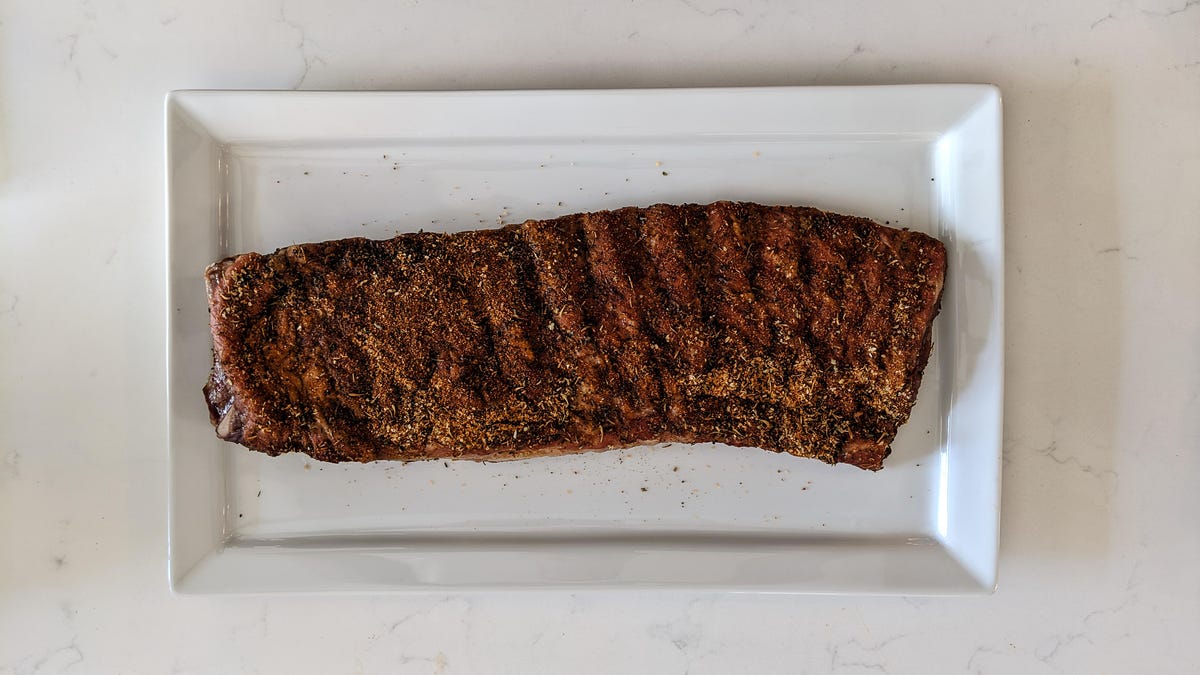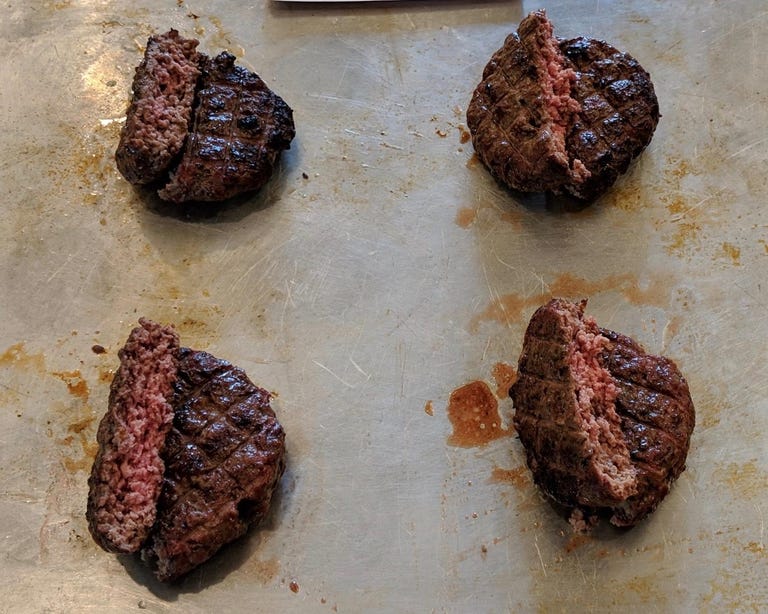To determine the best gas grill and get a feel for how these grills perform in a variety of cooking scenarios, we perform three tests. Based on different meats, methods and heat settings, these tests show us how efficiently and evenly a grill does (or doesn’t) cook.
Ribs
Our first test is ribs. It’s an anecdotal round, so there isn’t a connected thermometer set or software capturing specific data. We preheat each grill on high for 10 minutes before turning it down to low, indirect heat. Depending on the grill size, that means turning one or two burners off completely.
We remove the outer membrane on a rack of pork back ribs and season it with an all-purpose rub we use for ribs and chicken. Then, the ribs are placed on the grates for at least three hours with the lid closed the entire time.
<figure uuid="10753368-991d-4e14-966e-7e068d948bfa" size="large" float="none" lightbox="false" image-do-not-resize="false" image-url="https://www.cnet.com/a/img/resize/1dc857ab5dcc1127fbeb759ff8f65a5abf7f661a/hub/2019/05/06/10753368-991d-4e14-966e-7e068d948bfa/grills-2019-16.jpg?auto=webp&height=500" image-caption="
Rib testing takes three hours on low, indirect heat.
” image-credit=”Chris Monroe/CNET” image-alt-text=”grills-2019-16″ image-filename=”grills-2019-16.jpg” image-width=”4032″ image-height=”2268″ image-date-created=”2019-05-06″ image-do-not-crop=”true” image-watermark=”true” ng-block=”{"id":"0ionvrul8j5ltfb","type":"image"}” edition=”us” class=”c-shortcodeImage u-clearfix c-shortcodeImage-large c-shortcodeImage-hasCaption”>

Rib testing takes three hours on low, indirect heat.
Rib enthusiasts may not agree with this relatively short and smoke-free cooking method, but it allows us to see just how well a regular propane gas grill can cook low and slow. If time allows we continue cooking until the ribs are completely done and make note of the total cook time.
Chicken
To test the grill with a midrange cook time and medium heat settings, we grill a whole chicken. We preheat the grill on high for 10 minutes, then turn the heat down to medium and turn off the burners to create an indirect heat environment.
Once we’ve trimmed and seasoned the bird, we place it in a roasting pan and insert one temperature probe into each chicken breast, for a total of two probes per chicken (this is an important step — even if the grill has a built-in thermometer — because undercooked chicken is no good for anyone). To keep our results as fair as possible, all the chickens are as close as possible to 5.5 pounds.
<figure uuid="739bdff1-eff6-4e32-8de9-14d3a828b414" size="large" float="none" lightbox="false" image-do-not-resize="false" image-url="https://www.cnet.com/a/img/resize/aef590e95a9429ac1f4b1252292c68fbe61f0e91/hub/2019/05/06/739bdff1-eff6-4e32-8de9-14d3a828b414/grills-2019-24.jpg?auto=webp&height=500" image-caption="
Whole chickens are cooked on indirect, medium heat until both breasts reach 165 degrees F.
” image-credit=”Chris Monroe/CNET” image-alt-text=”grills-2019-24″ image-filename=”grills-2019-24.jpg” image-width=”3744″ image-height=”2106″ image-date-created=”2019-05-06″ image-do-not-crop=”true” image-watermark=”true” ng-block=”{"id":"rl18meehor7jpog","type":"image"}” edition=”us” class=”c-shortcodeImage u-clearfix c-shortcodeImage-large c-shortcodeImage-hasCaption”>

Burgers go on the grill over direct, high heat.
Burger testing points out any hot spots across the grill’s cooking surface if one burger consistently reaches 145 F before the others in every round.
An average 15- or 20-degree difference across the quickest and slowest patties in a batch was the norm in our testing. Red flags are raised when we begin to see differences in the 30- to 40-degree range.
